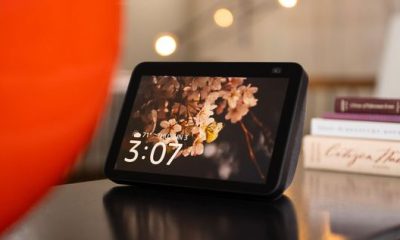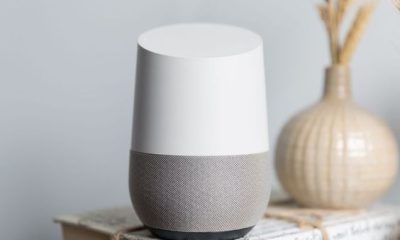Popular
How To Use A Smart Blood Pressure Monitor With Alexa?

How to Use a Smart Blood Pressure Monitor with Alexa: Getting Started
Smart blood pressure monitors have revolutionized the way individuals can monitor their cardiovascular health from the comfort of their homes. With the integration of voice assistants like Alexa, it has become even more convenient and accessible to keep track of your blood pressure. In this article, we will guide you through the process of getting started with a smart blood pressure monitor and using it in conjunction with Alexa.
I. Introduction
A. What Are Smart Blood Pressure Monitors?
Smart blood pressure monitors are advanced medical devices designed to provide accurate readings of your blood pressure. They offer the advantage of being easy to use and are often accompanied by smartphone apps that allow you to record and analyze your blood pressure data over time. These devices are particularly useful for individuals who need to monitor their blood pressure regularly, whether it’s for medical reasons or simply to maintain a healthy lifestyle.
B. The Integration of Alexa for Monitoring
The integration of Amazon’s Alexa voice assistant with smart blood pressure monitors has brought a new level of convenience and accessibility to the monitoring process. With Alexa, you can check your blood pressure, save measurements, set reminders for regular checks, and even receive insights about your cardiovascular health, all through simple voice commands.
In this article, we will walk you through the steps required to set up your smart blood pressure monitor and connect it to Alexa. By the end, you will have a clear understanding of how to use these two technologies in harmony to manage your blood pressure effectively.
Next, we’ll delve into the process of setting up your smart blood pressure monitor, so you can start using it with Alexa seamlessly.
II. Setting up the Smart Blood Pressure Monitor
A. Unboxing and Components
1. Unboxing: When you receive your smart blood pressure monitor, carefully unbox it and inspect the contents. You should find the monitor, a cuff, batteries or a charging cable (if required), and an instruction manual.
2. Inspect the Cuff: Examine the cuff for any signs of wear or damage. It’s essential to ensure that the cuff is in good condition for accurate readings.
B. Connecting the Device to a Smartphone App
1. Download the App: Most smart blood pressure monitors come with a dedicated smartphone app. Visit your device’s app store (e.g., Apple App Store or Google Play Store) and search for the app. Download and install it on your smartphone.
2. Create an Account: Open the app and create an account if required. This will usually involve providing your basic information and setting up a profile.
3. Pairing with the Monitor: Follow the app’s instructions to pair your smartphone with the blood pressure monitor. This typically involves activating Bluetooth on your smartphone and turning on the monitor. The app should detect and connect to the device.
4. Calibration: Some monitors may require calibration. Follow the app’s guidance to ensure the monitor provides accurate readings.
C. Pairing the Monitor with Alexa
1. Alexa App Setup: Ensure you have the Alexa app installed on your smartphone. If not, download it from your device’s app store.
2. Skill or Integration: Some blood pressure monitors come with specific Alexa skills or integrations. In the Alexa app, go to the “Skills & Games” section, search for your monitor’s skill or integration, and enable it.
3. Link Your Accounts: Follow the on-screen instructions to link your blood pressure monitor account with Alexa. This may involve logging in to your monitor’s account within the Alexa app.
With your smart blood pressure monitor set up and connected to Alexa, you’re now ready to start using voice commands to check and manage your blood pressure. In the next section, we’ll explore the various Alexa voice commands you can use for monitoring.
III. Using Alexa Voice Commands
A. Basic Commands for Checking Blood Pressure
1. “Alexa, check my blood pressure.“: With this command, Alexa will initiate the blood pressure measurement process. Follow the monitor’s instructions to obtain your reading.
2. “Alexa, what’s my blood pressure?“: Alexa will provide you with the latest blood pressure reading stored in your monitor’s app.
B. Asking Alexa to Save and Track Blood Pressure Data
1. “Alexa, save my blood pressure.“**: This command stores the current blood pressure reading in your app, allowing you to track changes over time.
2. “Alexa, record my blood pressure for today.“**: This is useful for recording your daily measurements and creating a log for better health management.
C. Setting Up Reminders and Notifications
1. “Alexa, remind me to check my blood pressure at 5 PM.“: You can schedule reminders to ensure you don’t forget your regular blood pressure checks.
2. “Alexa, notify me if my blood pressure exceeds a certain level.“: Alexa can provide alerts if your readings go beyond a specified range, helping you stay on top of your health.
By utilizing these Alexa voice commands, you can streamline the process of monitoring your blood pressure and ensure that you maintain a consistent record of your measurements.
In the following section, we’ll delve into interpreting and understanding blood pressure readings, providing you with insights to better manage your cardiovascular health.
IV. Interpreting and Understanding Blood Pressure Readings
A. Explaining Systolic and Diastolic Measurements
1. Systolic Pressure: This is the higher number in your blood pressure reading (e.g., 120/80). It represents the pressure in your arteries when your heart beats and pumps blood.
2. Diastolic Pressure: The lower number (e.g., 120/80) indicates the pressure in your arteries when your heart is at rest between beats.
B. Understanding Normal vs. Abnormal Readings
1. Normal Blood Pressure: A typical healthy blood pressure reading is around 120/80 mm Hg. However, normal ranges can vary depending on factors like age and medical conditions.
2. Hypertension: High blood pressure (hypertension) is generally diagnosed when your readings consistently exceed 130/80 mm Hg. It’s important to consult a healthcare professional for guidance if you have high blood pressure.
3. Hypotension: Low blood pressure (hypotension) may occur when your readings consistently fall below 90/60 mm Hg. This can also have health implications and should be discussed with a doctor.
C. Utilizing Alexa for Health Insights
1. “Alexa, give me insights on my blood pressure.“: Alexa can provide general health insights and recommendations based on your blood pressure data. However, consult a healthcare professional for personalized advice.
2. Data Trend Analysis: Your monitor’s app may offer data trends, graphs, and historical records. Review these to identify patterns and changes in your blood pressure over time.
Understanding the significance of your blood pressure readings is essential for managing your cardiovascular health effectively. In the next section, we’ll explore how to integrate your blood pressure data with health and wellness apps for a comprehensive health management approach.
V. Integrating with Health and Wellness Apps
A. Syncing Data with Health Tracking Apps
1. Linking to Health Apps: Many smart blood pressure monitors allow you to sync your blood pressure data with popular health and wellness apps like Apple Health, Google Fit, or specific apps provided by your monitor’s manufacturer.
2. Automatic Data Transfer: Once linked, your blood pressure readings will be automatically transferred to the health app, creating a comprehensive health profile.
B. Monitoring Trends and Sharing Data with Healthcare Providers
1. Tracking Trends: Use the features within health and wellness apps to monitor trends in your blood pressure. Some apps provide visual representations of your data over time.
2. Sharing with Healthcare Providers: Share your data with your healthcare provider or physician. This can be especially helpful during medical check-ups, allowing your healthcare team to make informed decisions about your health.
Incorporating your blood pressure data into a broader health and wellness ecosystem can provide you with a holistic view of your well-being. In the next section, we’ll address common issues and tips for maximizing the accuracy of your blood pressure readings with your smart monitor and Alexa.
Stay tuned for more valuable information on using your smart blood pressure monitor effectively.
VI. Troubleshooting and Tips**
A. Common Issues and How to Resolve Them
1. Inaccurate Readings: If you consistently get inaccurate readings, ensure the cuff is placed correctly and that it’s the right size for your arm. Follow the manufacturer’s instructions for proper placement.
2. Connectivity Problems: If you experience issues connecting your monitor to your smartphone or Alexa, double-check your device’s Bluetooth settings and ensure they are in range. If problems persist, consult the user manual or contact customer support.
B. Maximizing the Accuracy of Blood Pressure Readings
1. Consistency is Key: Take readings at the same time each day, preferably in the morning, before eating or taking any medication. Consistency helps in tracking trends accurately.
2. Relax and Be Still: Sit quietly with your back supported and feet flat on the ground. Avoid talking or moving during the reading, as this can affect accuracy.
3. Multiple Readings: Take two or three readings a minute or two apart, and average them for a more precise result.
C. Privacy and Security Considerations
1. Protect Your Data: Ensure that the data stored in your blood pressure monitor app and shared with Alexa is kept secure. Use strong, unique passwords and enable any security features provided by the manufacturer.
2. Understand Data Usage: Be aware of how your data is used by the app and any third-party services. Review privacy policies and settings to control what information is shared.
By troubleshooting common issues, optimizing the accuracy of your readings, and safeguarding your data, you can make the most of your smart blood pressure monitor and Alexa integration.
In the concluding section of this article, we’ll summarize the benefits of using these technologies and encourage regular monitoring for better health.
VII. Conclusion
Utilizing a smart blood pressure monitor integrated with Alexa can significantly enhance your ability to monitor and manage your cardiovascular health. The convenience of voice commands, automated data tracking, and the ability to receive health insights make this combination a valuable tool for your well-being.
Regular monitoring of your blood pressure is crucial for maintaining a healthy lifestyle and catching potential issues early. With the knowledge gained from this article, you now have the tools and understanding to make the most of your smart blood pressure monitor and Alexa.
We encourage you to embrace this technology and incorporate it into your daily routine. By doing so, you can take a proactive approach to your cardiovascular health, stay informed about your blood pressure trends, and make informed decisions for a healthier life.
Remember that while this technology can be immensely helpful, it should complement, not replace, regular check-ups with your healthcare provider. If you have concerns about your blood pressure or receive consistently abnormal readings, consult a medical professional for personalized guidance and care.
Incorporating smart technology into your health management can be a transformative experience, and we hope this guide has been valuable in helping you embark on this journey.
VIII. Additional Resources and References
For further information and resources on smart blood pressure monitors, Alexa integrations, and related health topics, consider exploring the following:
Thank you for reading this guide on how to use a smart blood pressure monitor with Alexa. We wish you the best on your path to better health and well-being.

















Pingback: How To Track Your Blood Sugar Level With A Smart Glucometer » ArenaHub